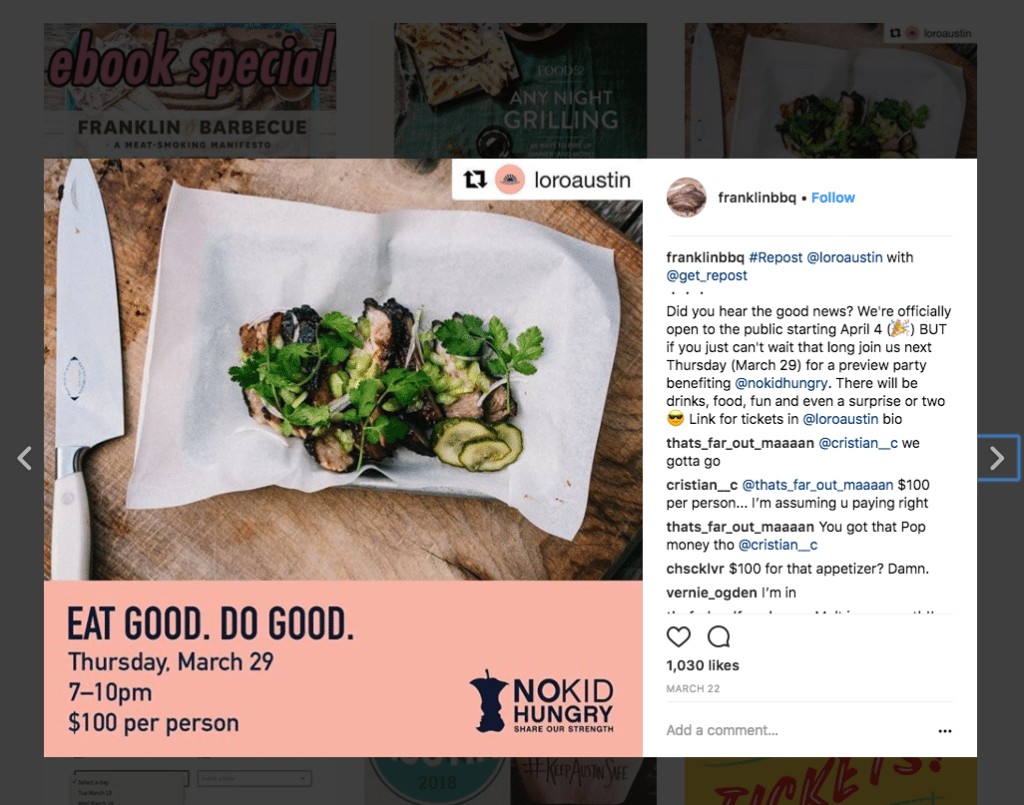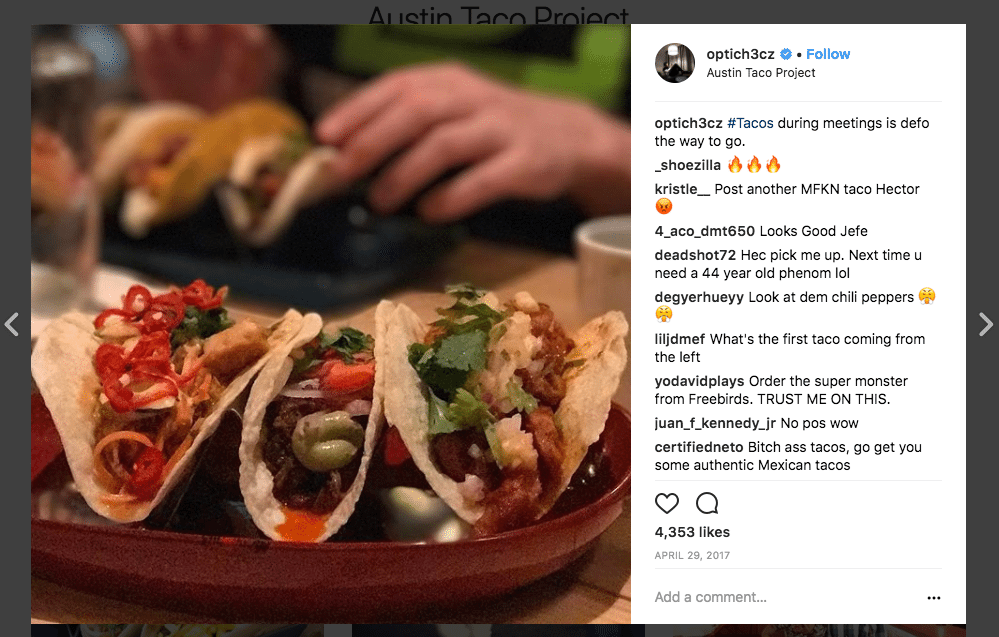Restaurant branding and strategy has changed thanks to social media: every customer is now a walking, talking online review to an audience of…well…everyone. From Instagram and #foodies to Google My Business and Yelp reviews—how is your restaurant’s brand supposed to both keep up with the trends AND help maintain control over its look and feel?
The good news? It’s not as labor intensive (or scary) as it may seem. With a solid restaurant branding and social media strategy in place, you’ll be prepared for (almost) anything.
What we’ll cover here: Five ways that you can help stop the madness and maintain some control over your restaurant’s brand.
How to control your restaurant’s brand on social media
Some of our Envisionaries (people who work at Envision—get it?) have a background in Food and Beverage, which means we can bring our insider knowledge into our client strategy. Over the past 17 years we’ve had some pretty intense conversations with clients and prospects alike about what to do with their customers’ increasing need to share ALL THE THINGS.
We’ve come up with five simple rules to follow to help you stay on top of your restaurant’s brand.
1. Make sure you’re active where it counts.
A caveat before we start in on this one: be present but not EVERYWHERE unless you have the bandwidth to do so. It’s better to be on just a couple of platforms and do them well than to try to spread yourself TOO thin and have a handful of platforms where you’re barely present.
Some stats to know:
- Facebook: 75% of consumers have used Facebook to decide where to eat. (Social Media Monthly)
- Twitter: 79% of users recommend brands that they follow on Twitter. (AdWeek)
- Instagram: 75% of Instagram users will go to your website after they see your post in their feed. (Locowise)
What does all of this mean?
It means that having an active presence on these platforms will get more people in the door. Post at least once a day on Facebook and Instagram. Twitter is a different animal and requires a LOT more engagement—if you are able to do that, go for it! If not, it’s best to focus on Facebook and Instagram.

Franklin BBQ, an Austin favorite and nationally recognized, keeps their diners in the know with their Instagram posts. Notice the number of likes.
2. Take advantage of what social can offer.
Let’s start by stating the obvious: Social is a very visual channel. As good as it is to talk about your locally sourced ingredients and your drink specials, your customers want to SEE what they’re getting.
Stats to know:
- According to Toast (and read this article because it is fantastic!), “diners prioritize delicious food when choosing a restaurant to visit…”
- Another survey, by Zagat, found that 75% of people who look at food photos say that pictures on social have been their main influence on their choice of where to eat.
- Facebook, in particular, has added some wonderful features to their business pages to help restaurants and bars reach more people: the addition of a call to action button that can be used for reservations, the ability to upload your menu, and the ability to highlight multiple locations are just a few! Sprout Social has a wonderful post on this here, and we highly recommend the read.
What does all of this mean?
Each platform has tools specifically designed to help you boost your reach to new diners—be sure to educate yourself on what they are and how the tools can help you upgrade your restaurant branding and strategy!
3. Let customers do some of the work.
Because you have to focus on other things like…making and serving your delicious food, you have to have a strategy to let your customers become your advertisers. Reviews on social platforms like Facebook and Google can seriously help your street cred.
Stats to know:
- 88% of people are influenced by online comments and reviews when choosing a place to eat. (Sprout Social)
- 84% of people trust online reviews as much as peer reviews when it comes to making decisions on where to eat. (Bright Local)
What does all of this mean?
Your restaurant branding and strategy should include your servers! They’re your brand ambassadors in the trenches! Empower your servers to ask for online reviews from tables that have excellent experiences. One of our clients (a local, multi-location restaurant) had a contest to see which server was able to get the most positive reviews in 4th quarter and, as a result, was able to raise their average rating from 3 stars to 4.8 stars! Customers will be your brand advocates if you give them a nudge here and there.

Austin Taco Project encourages diners to tag them in their social shares. This one received over 4,000 likes! (photo via @optich3cz on Instagram)
4. Take your reputation seriously.
You saw the stats from point number 3 about user reviews, but online reputation management means more than letting the positive reviews roll in—it also means engaging with reviews (both positive and negative) and creating a public view of your excellent customer service.
Stats to know:
- A HALF STAR difference on a Yelp review rating can influence your business by 27%, according to a study done by Foodbeast.
- Customers read reviews on restaurants more than reviews for any other industry. (Bright Local)
- 73% of customers say positive reviews make them trust a local business more. (Bright Local)
What does all of this mean?
Having a plan of attack for online reviews is a critical part of your online reputation management.
- Take time every day to review your reviews.
- Respond to negative reviews as soon as possible—if other users see that you read the reviews and take your customer service seriously, they’re more willing to overlook some harsh critique.
- If possible, get a reputation management tool that can help you keep track of your reviews as they come in. We use com but Get Five Stars and Birdeye are other tools you can use, as well. Find something that you like and implement it to help you stay on top of your reviews and ratings.
5. Learn to let it go (kind of).
This one may be the hardest one of all. Despite your best intentions, your restaurant branding plan, your wonderful plating, and excellent customer service, someone will take a not-so-flattering picture of their dish. While some restaurants have banned cell phones, it may not always be feasible to get your diners to put down their phones or prevent them from taking and posting pictures of their meals and drinks.
So, what do you do?
We say embrace it. If you can’t prevent it from happening, find ways to utilize this user-generation content (UGC) to your advantage. Re-gram posts from customers, respond to their pictures with comments from your business account—use their ceaseless desire to share to your advantage.
Final thoughts
Generation X, Millennials, and the up and coming Generation Z, are all online and have become used to sharing their lives, their experiences, and their preferences on social. In order to keep up with this fast-evolving, social economy, restaurants need to adjust their restaurant branding and strategy to include social media. Hopefully, these 5 tips get you started on the right path.
Did we miss anything? Let us know!
-FINAL(01-00)-White&Blue-01.svg)





